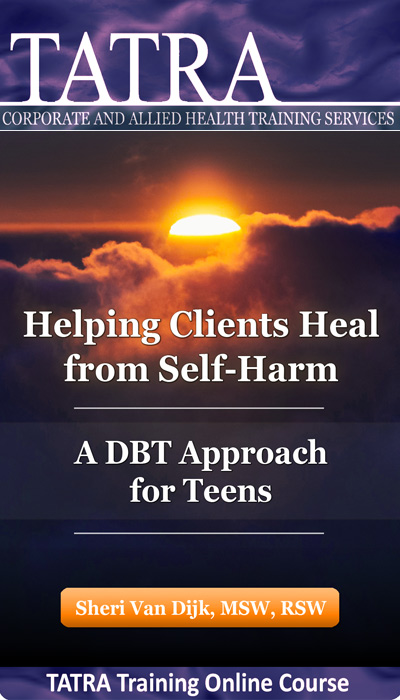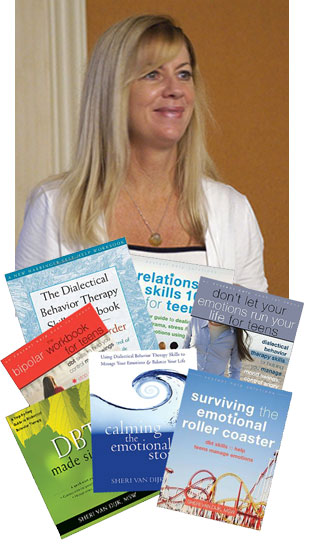27 Jan Helping Clients Heal from Self-Harm: A DBT Approach for Teens


Self-harm, or non-suicidal self-injury (NSSI) is most common among adolescents and young adults. Although NSSI typically decreases in late adolescence, this behaviour is one of the strongest antecedents of suicide in youth; and those who engage in repetitive NSSI seem to be at high risk for continuing to use dysfunctional emotion regulation strategies, even after discontinuing NSSI. People engage in NSSI for a wide array of reasons (including a diagnosis of Borderline Personality Disorder, or BPD), but usually this involves an inability to manage emotions in some way, making Dialectical Behaviour Therapy (DBT) an ideal treatment for this population.
While most mental health clinicians will encounter NSSI at some point, there is still a paucity of research about this behaviour and why it happens; and education programs rarely teach about this behaviour and how to work with clients who are engaging in it. This workshop will help you understand NSSI, factors to consider when assessing and working with clients, and will take a DBT approach to helping clients eliminate this behaviour.
Outline:
- What is NSSI, and what do we know about it?
- Why do people self-harm?
- How to not freak out when you discover your client is self-harming
- How to effectively assess for NSSI
- Conceptualizing NSSI through the DBT Biosocial Theory and The Experiential Avoidance Model (EAM)
- Overview of treating NSSI from a DBT-informed perspective:
- The Behavioral Analysis
- Distress Tolerance Skills:
- F-TIP skills to regulate emotions quickly
- Pros and Cons
- Dialectical Abstinence
- Alternate Rebellion
- Distract, self-soothe, and IMPROVE the moment
- The role of Mindfulness in eliminating NSSI
- Emotion Regulation Skills:
- Nonjudgmental Stance
- Radical Acceptance
- Self-validation
- Opposite to Emotion Action

Participants will learn:
- How to define Non-suicidal Self-Injury and some of the statistics related to this
- Tools to help you not freak out when you find out your client is self-harming
- Reasons teens self-harm and ways to help yourself, your client, and their family understand the behavior
- How to effectively assess for self-harm and tools to help improve commitment to treatment, building rapport and trust
- Overview of some DBT skills and strategies to work toward eliminate self-harming behaviours


This online workshop will give you instant access to the course video content (3 hours duration), accessible via streaming on our website, as well as downloads for supplemental materials. You can view the course content in your own time, there is no time limit on access.
Please click the green ‘Mark Complete’ button on each module as you progress. You can access the sessions in any order and go back to previous sessions if required.
A certificate of completion will be generated upon finishing the course and completing a short assessment quiz. If the certificate is not showing, please confirm you have marked all sections as ‘Complete’. Please consult your professional organisation/association to confirm whether you are able to claim any CPD points/hours for this online workshop.



 Sheri Van Dijk, MSW, RSW, is the author of seven DBT books, including The Dialectical Behaviour Therapy Skills Workbook for Bipolar Disorder, Calming the Emotional Storm, and Don’t Let Your Emotions Run Your Life for Teens, the focus of which is to teach clients how to use mindfulness practice and DBT skills to help them live emotionally healthier lives.
Sheri Van Dijk, MSW, RSW, is the author of seven DBT books, including The Dialectical Behaviour Therapy Skills Workbook for Bipolar Disorder, Calming the Emotional Storm, and Don’t Let Your Emotions Run Your Life for Teens, the focus of which is to teach clients how to use mindfulness practice and DBT skills to help them live emotionally healthier lives.